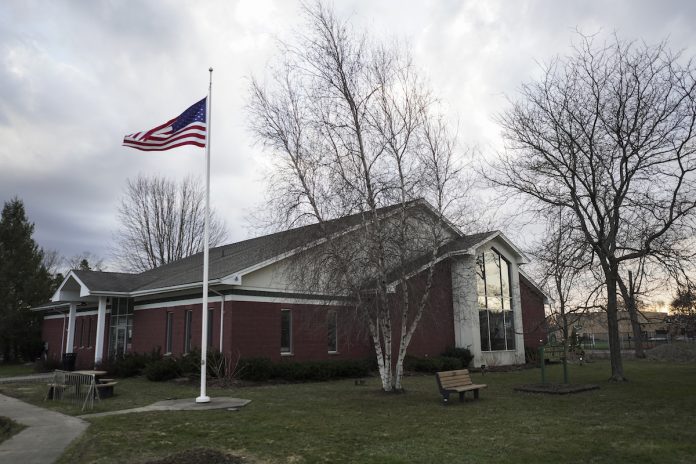
Richard F. Cortez, the top elected official in Hidalgo County, at the southern tip of Texas, is so full of anticipation for the federal stimulus money that is about to flow into his county that he has memorized the precise amount and happily recites it: “$212,702,647.”
Over the past year, Hidalgo, a border community that is one of the country’s poorest counties, has lurched from one disaster to another. The coronavirus pandemic hit, unemployment skyrocketed, a hurricane swept through, and then came the winter freeze. So the money, Cortez said, could not have come at a better time.
“The American Rescue Plan—that’s a proper term for the situation that we’re in,” said Cortez, a retired certified public accountant. “It’s pretty amazing that we’re still standing up.”
The biggest infusion of funds in decades will soon start, putting state, local and tribal governments in a situation they have not experienced in years: Items that had long seemed totally unaffordable are now well within reach.
Cortez said it is too early to know precisely how Hidalgo County will allocate its money, but states can use the money for pandemic-related costs, offsetting lost revenues to provide essential government services, and for water, sewer and broadband infrastructure projects.
The $350 billion that was earmarked for state, local and tribal governments and U.S. territories “was one of the largest spending items in the entire bill,” said Dan White, director of fiscal policy research at Moody’s Analytics, a financial analysis firm. He said the total was more than quadruple what is needed to plug state and local budget holes through next summer.
Democrats in Congress and local governments who supported the bill said that helping America’s states, cities and counties recover from a historic pandemic was about more than simply covering shortfalls and that they were worried about Congress doing too little instead of too much. They note that most of the aid will be available through the end of 2024.
“This bill is a historic investment in local government,” said Mark Ritacco, director of government affairs for the National Association of Counties.
Republicans and conservatives in Washington called it wasteful overkill.
“Increasingly, federal proposals to provide a cash infusion for state and local governments has become a solution in search of a problem,” said the Tax Foundation, a right-leaning nonprofit in Washington, D.C.
It is a very different picture from one year ago, when state and local governments predicted collapses in revenue and slashed their spending accordingly, laying off park workers, teachers and sheriff’s deputies. But in an unexpected twist, revenue in most states did not drop nearly as much as was predicted, and now governments are going into their budget-making season with a markedly brighter sets of numbers. According to White, 31 states now have enough cash to fully absorb the economic stress of the pandemic recession on their own.
“The surprises keep on coming,” he said.
The cash is coming over the objection of Republicans in Congress, none of whom voted for the bill.
But some Republicans in local governments said the choice between people and politics was not particularly difficult.
Mayor Jerry Dyer of Fresno, the largest city in California’s San Joaquin Valley, an agriculture-rich region that is a conservative stronghold, was one of the few Republican leaders in the area who supported the bill.
Dyer said his city had been weighing potential layoffs of more than 200 city employees, including police officers and firefighters, as it faced a $25 million budget deficit. But the bill put an end to any layoff discussions. Fresno, a city of 531,000, was poised to receive $177 million.
“When you make those types of decisions and you go against a party that I’m a part of, it does feel lonely,” said Dyer, a former Fresno police chief. “You start wondering along the way what kind of impact that could have on you in the future. But the reality is, I felt I was making the right decision for the right reason to benefit the people of Fresno, not necessarily a party.”
The aid will be distributed to states according to a formula that is based largely on the state’s unemployment rate, officials said. There are a host of rules on how the money can be spent. For example, the money cannot be used to pay down pension obligations or for cutting taxes.
Republicans in Congress argued that a funding formula based on unemployment instead of population benefits Democratic-led states and hurts Republican-controlled ones. One analysis from Rep. Jason Smith, R-Mo., found that 33 states were getting less money based on the unemployment formula, all but 10 of them led by Republican governors.
But many Democratic officials and some Republican ones disputed the notion of a partisan bailout.
“I think my residents know I don’t give a hoot about party; all I care about is making sure the street sweeper runs, the police show up and the water doesn’t stop,” said Acquanetta Warren, a Republican who is the mayor of Fontana, a working-class suburb east of Los Angeles set to receive $52 million.
Local governments have been hit harder than states. Three-quarters of the more than 1.3 million jobs lost among state and local governments since February 2020 have been at the local level, White of Moody’s found, the vast majority of them from school districts.
Counties—which are critical geographies for public services like emergency services, public health departments and local jails—were ecstatic. Many had complained that funds from previous rounds of pandemic stimulus had not reached them because the funds were routed through states for smaller counties. This time, the checks are coming directly from the U.S. Treasury Department.
The sheer size of the sums has shifted the scale of what is possible. Erie County, New York, which includes Buffalo, has for years struggled with barely functioning internet in its rural areas, which have been mostly bypassed by internet providers.
“People would drive to the library, sit in the car in the parking lot to get on the Wi-Fi,” said Mark Poloncarz, the county executive.
A plan for the county to lay cable for internet service was scrapped a year ago when Covid-19 blew a hole in the county’s budget, but Poloncarz plans to include the broadband project in the $178 million the county will receive.
“We’re going to get that done now,” he said.
Coroner’s offices, usually part of county governments, reflect the ravages of the past year. Dottie Owens, the coroner for Ada County, Idaho, which includes Boise, said the stimulus money could not come soon enough, as a number of coroners in rural counties in the state were still without proper personal protective equipment. The needs go well beyond this moment, she said. The overdose rate in her county is up, as is the suicide rate, and there is an urgent need for more funding for mental health services. Last year, her office had more homicides of children than in the past five years combined, she said.
The suicide rate had been declining, “and then you lock everybody down for a year, and what do you expect?” she said.
One of the reasons the finances of state and local governments emerged better than expected is the way jobs were lost in this recession. According to White’s analysis, fewer than 1 million of the approximately 10 million jobs still missing from before the pandemic are in what are considered high-wage industries. In contrast, during the Great Recession, more than one-fifth of the jobs lost were in high-wage industries, he found.
Because most taxes are paid by those in the middle and upper parts of the wage ladder, revenue collection took less of a hit than was expected. This has been good for the revenues of states like California, New York, Connecticut and New Jersey that rely on high-income residents for a substantial share of income tax revenue.
In California, the pot of stimulus money was so large, it put state officials on the defensive. The state government’s direct stimulus intake: $26 billion. Its January budget surplus projection: $15 billion.
State finance officials said the stimulus money was much needed because California’s bump in revenues was not a sign of a complete economic recovery. The state lost a record 1.6 million jobs in the pandemic in 2020.
“Don’t equate where we are on a revenue basis with where we are on an economy basis,” said H.D. Palmer, a deputy director of the state’s Department of Finance. “It is going to take us at least two years, if not longer, for us to get back to pre-pandemic employment levels.”
The financial picture is far more grim in California’s cities and counties.
“We’ve been fighting this battle against Covid-19 with our credit cards and our savings account,” said Mayor Eric Garcetti of Los Angeles.
The city’s budget shortfall was estimated last month at $750 million. The stimulus gives Los Angeles a $1.3 billion injection, almost double the budget gap.
Some mayors were still in shock.
“It’s unbelievable,” said Svante Myrick, mayor of Ithaca, New York. He said his city would receive $17 million, an amount that is about quadruple the size of the deficit.
Is the stimulus aid too much? No, he said. But the fight for funds will be fierce, with unions and neighborhood organizations and other interest groups all lobbying for a share.
“Honestly, if the federal government sent every community this amount of money every year, we’d be living in a cleaner, safer, more prosperous country,” he said. The looming fight over the money, he said, “is a small price to pay.”












